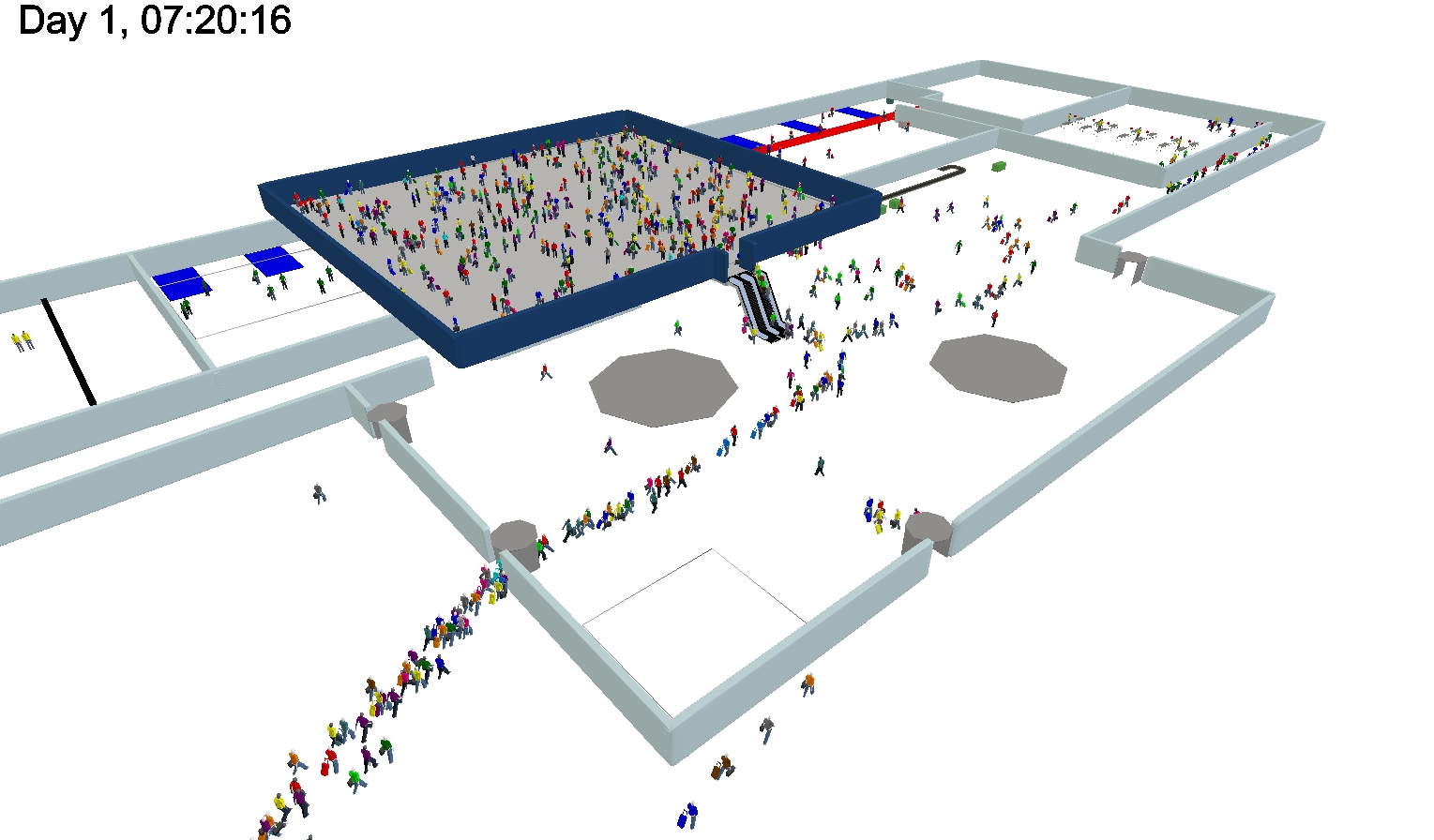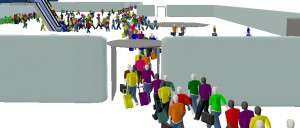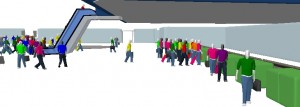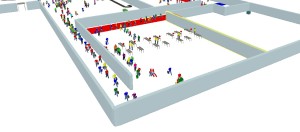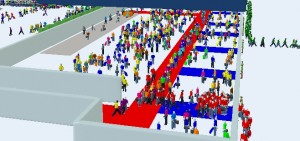Airport Simulation Eindhoven
Introduction
 Eindhoven Airport is a regional fast growing airport which has to expand in order to keep up with its growth. Until now Eindhoven Airport has been able to increase the number of passengers by changing the internal logistics and optimizing the flow of passengers.
Eindhoven Airport is a regional fast growing airport which has to expand in order to keep up with its growth. Until now Eindhoven Airport has been able to increase the number of passengers by changing the internal logistics and optimizing the flow of passengers.
Aiming at 5 million passengers in 2020, Eindhoven Airport needs to expand the airport physically. Together with its construction suppliers Eindhoven Airport has developed some ideas for expansion, but is unsure what the passenger flow s will be during a peak day and if the airport is still manageable after the planned expansion.
Eindhoven Airport has asked Talumis to support them with simulation.
Objective
The objective of this project was to create a simulation model which is able to determine passenger flows during a peak day through the airport and to analyze the different processes within the airport and to determine bottle-necks for certain planned capacities of key processes such as check-in and security control. The simulation model created by Talumis is able to be used as a planning tool by the employees at different facilities within the airport.
Solution
To create a model for Eindhoven airport, Talumis designed a new FlexSim object within the current FlexSim library designated as PersonFlow©. This object can handle passengers within the airport and automatically adjust the behavior of people in a more crowded area. Talumis did an extensive research together with Eindhoven Airport on the arrival patterns of passengers at the airport, where three types of passengers are distinguished. Passengers arriving for a holiday destination tent to have a completely different behavior from passengers that are flying with a typical business flight.
Talumis Approach
The layout as designed by Eindhoven Airport has been translated into a simulation model using the PersonFlow© object throughout the model (depicted below). The main input for the model is a flight schedule, where for each flight the EDT (Expected Departure Time), the type of flight, etc. is defined.
Processes in need of analyses
For Eindhoven Airport there were several main processes that needed to be modeled and analyzed in detail. These main processes were the entry of the passengers to the airport, the check-in process, the security and the waiting area after the security and its boarding process.
Extra entry needed?
Most of the passengers will arrive at one side of the airport and have a preference for the main entry. The main question for Eindhoven airport was how passenger flows would behave during the day. Would an extra entry door be needed and what type of door should be used?
Check-in process
Different options were possible for the check-in process. For instance dedicated flight number desks, or mutual desks for flights of the same company. In the end Eindhoven Airport wanted to gain more insight in how the different options would influence the check-in process.
Security processes
For its security process Eindhoven Airport wanted to know the capacity needed over time for a peak day combined with the average waiting time of a passenger. Eindhoven Airport could use it as a planning tool to schedule the needed security staff for a peak day.
Waiting areas
In order to determine the size of the waiting area, shops and boarding area it was relevant for Eindhoven Airport to see the occupation of the boarding area on a peak day. This allowed them to see if passengers were still able to move around without bothering the boarding process too much.
Results
Talumis designed a set of predefined scenario’s together with Eindhoven Airport, where the main difference lies in the crowdedness during the day in a 3 million to 5 million passengers per year scenario as well as differences in the amount of check-in passengers for certain flights. For each of these scenario’s Talumis ran simulations and generated a results report.
This project is a typical example in which simulation supports airport logistics. Talumis especially designed a PersonFlow© library object to support in airport logistics. The tool can give insight in the different processes of an airport and help you optimize the airport design.

